
views
Socializing the Cat
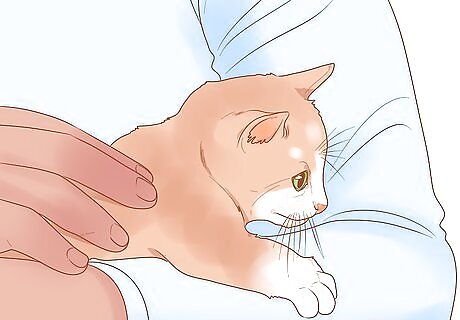
Begin young. It's easiest to socialize a cat when it is a kitten. A kitten is still learning what is "normal." If it learns at a young age that being handled and being sociable is "normal," it's more likely to be a sociable cat who's willing to be petted by strangers.

Work on socialization in your home. Work on petting the cat all over. Start with strokes the cat enjoys, such as pats on the head, and work up to stroking it all over. Try holding its paw for a few seconds, as well as its tail. After holding it for a few seconds, reward it with petting it likes. Keep working on to petting and touching areas it doesn't like as much. If the cat gets mad, it's time to stop and try again later.

Bring strangers to socialize. Have strangers (to the cat) come into your home. Let the cat approach them first. When it does, let your friend try to pet it if the cat will let them. You can try to encourage interaction by giving your friend a treat to offer the cat or a toy the cat can play with.

Take your kitten out to socialize. Give your kitten the chance to befriend other kittens. Some areas have kitten classes specifically designed to help you socialize your cat. However, if your area doesn't, consider taking your kitten to friends' houses, where you let them calmly hold the kitten. Tell them to pet it softly and talk to it in a calm voice. As an added bonus, this step will help your cat get used to riding in the car, and it won't just associate the car with going to the vet's office. It also helps to have the kitten meet other animals on these trips.
Training Your Cat in Obedience
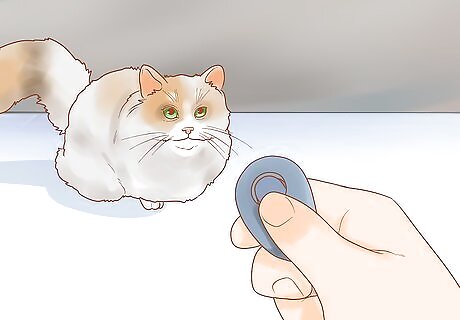
Begin with clicker training. A clicker is a device that makes a clicking noise. It works well for training because it is an immediate, consistent response to an action. When you begin clicker training, you just want to get your cat to associate it with good things, so you offer a treat and click at the same time. Keep doing this over and over, until the cat begins to associate the treat with the clicker. If you don't want to invest in a clicker, you can try a ballpoint pen that makes a clicking noise.

Help it come to its name. The easiest way to teach a cat to come to its name is to use a behavior already in place. For instance, if your cat always comes to the kitchen when you use the can opener, say its name as you use the can opener. Reward the cat with a treat.
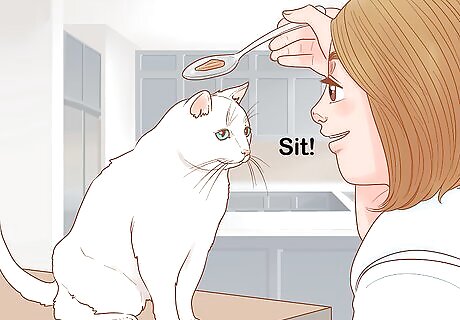
Work on "sit." Place a bit of moist food on a spoon. You can use tuna, baby food (meat only), cat food, or salmon, for instance. Hold it just above the cat's head, so it has to tilt up to get to the food. That should force its back end to the ground. When its back end is on the ground, click and offer it the treat. As your cat gets better at it, you can add in the command to "Sit." Start moving from the spoon to loose treats, using the clicker.

Move on to "stay." "Stay" only works if your cat has already mastered "sit." Tell your cat to sit in a distraction-free area. Say "stay." Make a small movement, like shuffling your feet or moving an arm. If the cat doesn't move, click and offer a treat. Keep making small movements and offering small treats if your cat doesn't move. If your cat does move, go back to smaller movements. Keep working up to harder and harder stays. You might walk across the room for a short stay, for instance. You'll need more patience with a cat than you would with a dog.
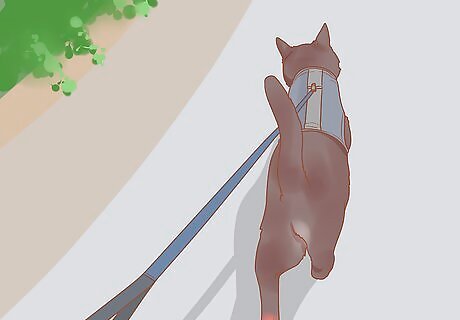
Teach it to walk on a leash. First, you'll need a harness and a leash. Place the harness on the cat in the house, and let it start getting used to it in short spurts. Once the cat is okay with that, you can take it into the yard on the leash. Don't walk it yet. Let the cat explore the yard on the leash. Don't leave it alone. Once the cat is okay with being outside, try taking it on short walks in the neighborhood.
Enrolling in a Handler's Program
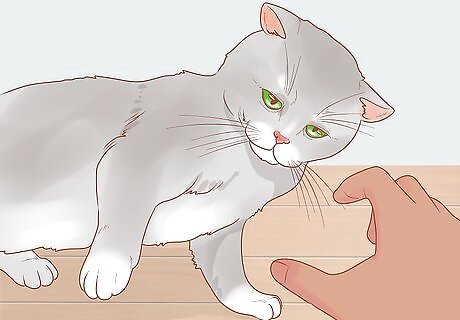
Decide if your cat has the right temperament. Not every cat is going to take to being a therapy pet, just as not every dog is right for the job. If your cat is shy or particularly skittish, for instance, it will not likely make a good therapy cat. Your cat needs to be sociable and enjoy attention from complete strangers.
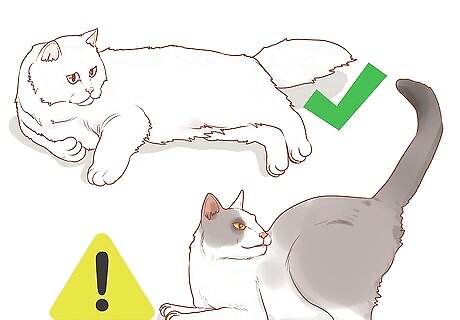
Learn your cat's communication style. Being part of a therapy team means you'll need to be able to handle your animal in whatever situation that comes up. The certification training will help you with that, but you need to be able to read your cat's body language and redirect it calmly when it is feeling skittish. Ask yourself some questions. Can you tell if your cat is mad? Can you tell when your cat is unhappy with being touched? What does your cat look like when it is happy? Define what calms your cat. This may be anything from petting, to making calming sounds, to giving it some alone time. Practice calming it down whenever it is angry or frightened.

Complete the handler course. When getting your cat ready, you'll need to complete a course sponsored by one of the certification programs. In that course, you'll learn how to appropriately handle your cat, as well as how to best prepare your cat for therapy. You can take the handler's course online, at places like the ASPCA's website. You also may be able to find short workshops in your city that fulfill the course requirements. Check with the organization you're getting certified through. Classes can run to $125.
Meeting Other Requirements
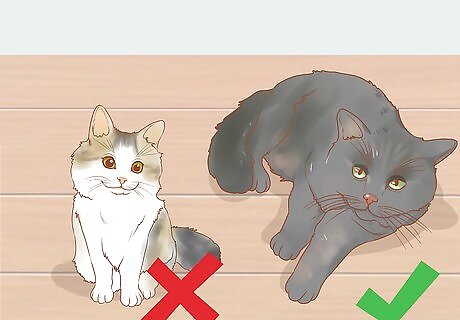
Make sure your cat is of age. If you want your cat to be certified, it usually must be a specific age. Often, your cat must be at least a year old before it can be certified as a therapy cat. In addition, you must have had the cat for at least 6 months.
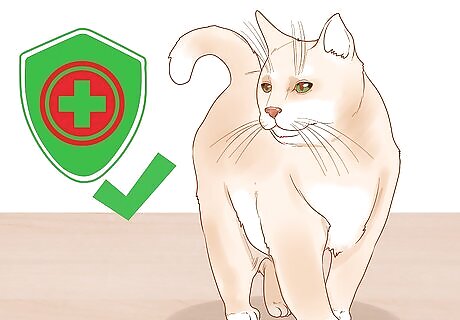
Get a clean bill of health. Before beginning any therapy, your cat should be evaluated by a vet. In addition to making sure the cat is healthy, the vet should also update the cat on any shots it needs. Often, the organization will require your vet to fill out a specific form. Your vet will likely be familiar with it.

Don't feed a raw diet to your cat. Another requirement by some certification organizations is that you don't feed a raw diet. A raw diet increases the chances that your cat will carry bacteria, putting those who are sick or who have poor immune systems at risk.



















Comments
0 comment